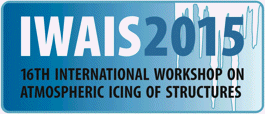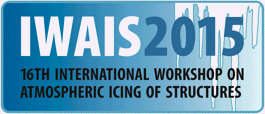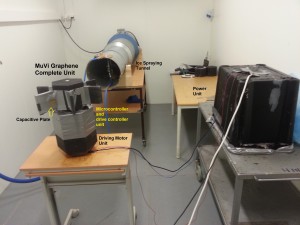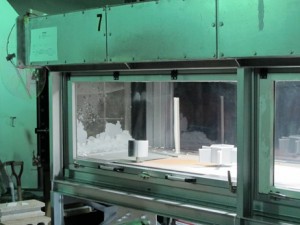Promising sensor
A new prototype of a atmospheric icing sensor promises to deliver more parameters on ice than current devices. Its set-up is modular so it can be modified for different users and climates
– Presently, there is no ice sensor commercially available that can detect and measure all important icing parameters such as: icing rate, melting rate, load and type simultaneously, says Umair N. Mughal, researcher at Atmospheric Icing ResearchTeam of Narvik University College in Norway.
Now Mr Mughal and collegue Muhammad S.Virk has designed and developed a new prototype modular hybrid atmospheric icing sensor.
– This sensory unit is potentially capable to deliver all of the described icing parameters and has successfully been tested at Cryospheric Environmental Simulator, Japan, in both icing and snow conditions.
MuVi-Graphene , as the device is called, is a modular atmospheric icing sensor, capable to:
* Measure Icing Load (Using Rotary/Torque Loading)
* Icing Rate (using Rotary/Torque Loading)
* Detect Icing Event (Using Mutual Charge Transfer Scheme)
* Determine Ice Type (Using Mutual Charge Transfer Scheme)
* Measure Melting Rate (Using Mutual Charge Transfer Scheme)
The sensor being modular means that the customers can decide which output parameters he or she wants (detecting ice, identify ice type, measure melting rate or measure icing load and icing rate) by doing minor design changes in the sensor configuration.
– Presently this sensor is suitable for onshore applications and stationary installations; however it also has adequate potential for offshore applications by introducing minor changes, says Mughal.
The device is an electromechanical rotating hexagon with six multi purpose plates mounted on it. It can be used by mounting on simple pole of designed dimensions. It can also be mounted on stationary structures in cold regions.
– Outputs from this sensor will be delivered to a data-logger, which can then be utilized in customized software solution for further applications like anti/deicing systems, says Mughal.
Among the potential users he mentions the wind energy industry, oil and gas, power network/distribution, road maintenance authorities and meteorological weather stations.



